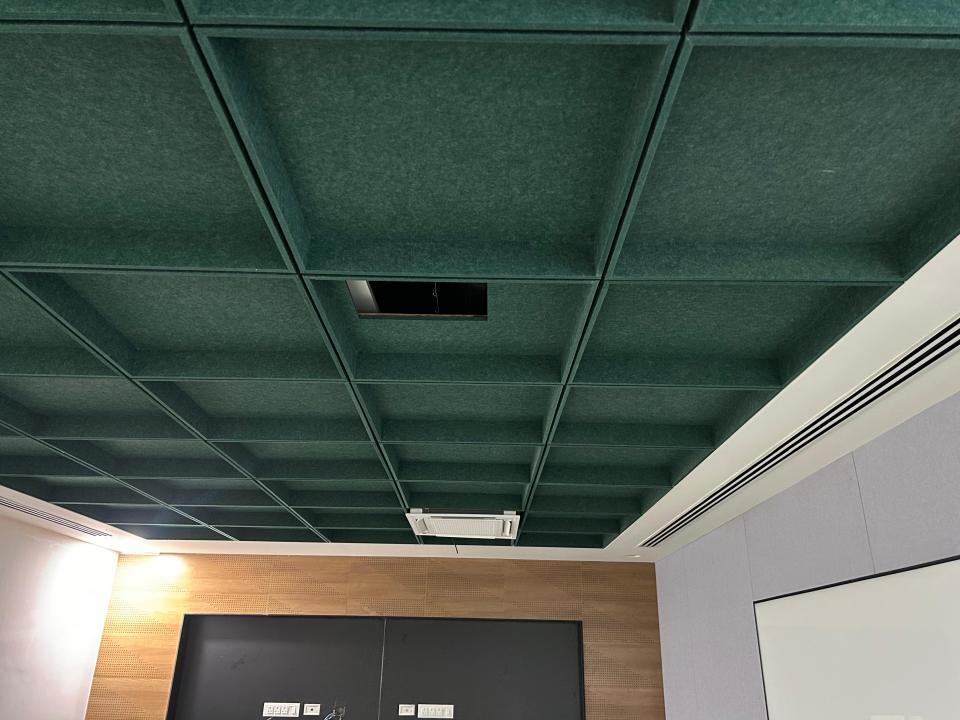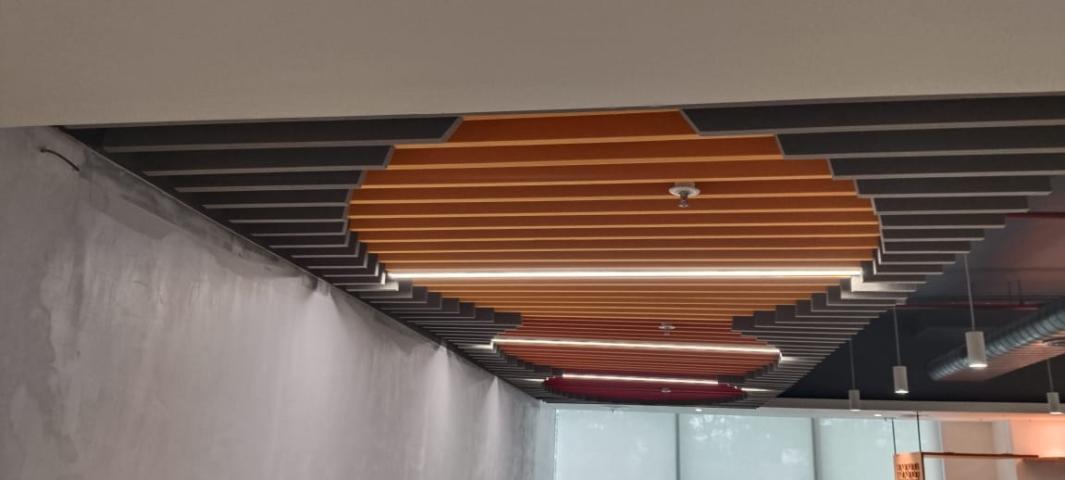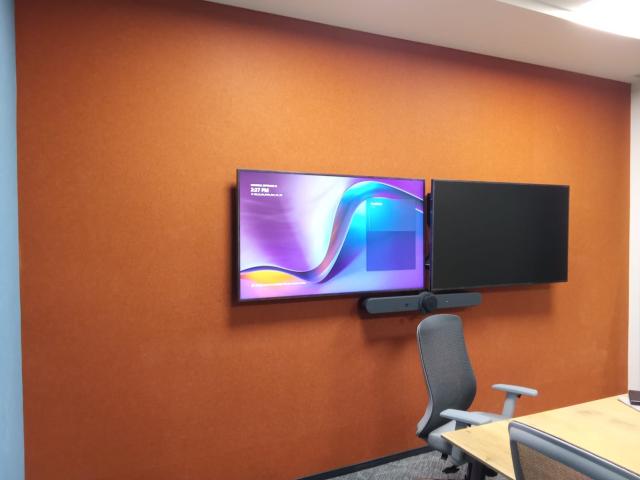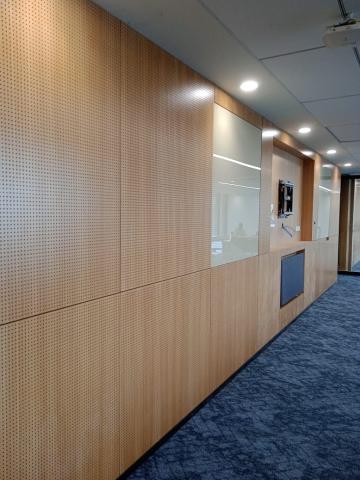Minimalist interiors, known for their clean lines, open spaces, and uncluttered aesthetics, have taken the design world by storm. The focus on simplicity and functionality, however, often highlights a particular challenge: sound management. Rooms with minimal furnishings and hard surfaces can create unwanted echoes or amplify noise. This is where acoustic panels come into play, blending seamlessly with minimalist designs while providing essential sound control. Today, let's explore how acoustic treatment—especially through the use of PET acoustic panels and other acoustic materials—can elevate a minimalist space by fostering tranquility and harmony.
Acoustic Challenges of Minimalist Spaces
Minimalism is characterized by a "less is more" philosophy, often involving bare walls, open floor plans, and limited furniture. While visually appealing, this >acoustic panels offer a functional and aesthetic solution to these challenges.
Why are They Essential?
Acoustic panels are sound-absorbing elements that minimize echo and improve sound clarity within a room. They’re typically made from acoustic materials like foam, fabric, or PET acoustic panels, which is a sustainable option made from recycled plastic. These materials help reduce sound reflections, making spaces quieter and more comfortable.
In minimalist interiors, acoustic treatment is essential because the open spaces can easily lead to sound bouncing around, creating an undesirable auditory experience. Incorporating acoustic panels into these designs allows for a more harmonious environment where speech and ambient sounds are soft and pleasant, rather than overwhelming.
Advantages of Installing PET Panels
PET acoustic panels are an innovative solution that complements minimalist aesthetics. Made from recycled plastic bottles, these panels are environmentally friendly, durable, and lightweight. The material is also highly customizable in terms of shape, color, and thickness, making it easy to integrate acoustic treatment without sacrificing >
Sustainability: As they're made from recycled materials, PET acoustic panels contribute to a greener environment, aligning well with eco-conscious minimalist interiors.
Versatility: Available in various colors and designs, they can be customized to blend seamlessly with the minimalist color palette, adding a subtle or bold accent based on the desired look.
Durability and Maintenance: PET acoustic panels are resistant to moisture, mold, and mildew, making them low-maintenance and ideal for both residential and commercial spaces.
In minimalist spaces, the adaptability of PET acoustic panels is especially useful. They can be installed as ceiling clouds, wall panels, or even as decorative art pieces that enhance both the room’s aesthetic and acoustic qualities.
Types of Acoustic Materials Ideal for Minimalist Spaces
Different acoustic materials can serve various functions in minimalist interiors. Here’s a look at some of the popular choices:
Foam Panels: Lightweight and affordable, foam acoustic panels are effective at absorbing high-frequency sounds. However, their appearance might not always suit minimalist >PET acoustic panels.
Fabric-Wrapped Panels: These panels come in a variety of colors and textures, which can be selected to match the minimalist color scheme. Fabric acoustic panels are excellent at absorbing mid-to-high frequencies, and their soft texture can add subtle visual warmth to an otherwise minimalist room.
PET Acoustic Panels: As discussed, PET acoustic panels are a top choice for minimalist interiors. Their versatility, environmental sustainability, and aesthetic appeal make them perfect for spaces that prioritize both form and function.
Wooden Acoustic Panels: Wood acoustic panels can be ideal for those who prefer a touch of natural elegance. Though slightly more pronounced in appearance, wooden acoustic panels add texture and warmth, which can contrast beautifully against a minimalist backdrop.
By selecting the right acoustic materials, homeowners and designers can tailor the acoustic treatment to enhance sound quality while respecting the room’s minimalistic design.
For maximum effectiveness, acoustic panels need to be placed strategically within a space. Here are some placement tips for minimalist interiors:
Walls: Mounting acoustic panels on large, bare walls is one of the most effective ways to reduce reverberation. Choose panels that either blend with the wall color for a subtle look or select a contrasting color for a modern, minimalist statement.
Ceiling Clouds: If wall space is limited or if a unique design element is desired, ceiling-mounted PET acoustic panels or other acoustic materials in the form of "clouds" can be installed. These not only manage sound but also create a sophisticated architectural feature that can be as subtle or bold as needed.
Corners and High-Traffic Areas: Corners are notorious for sound buildup. By placing acoustic panels in these spots, you can trap excess sound and minimize echoes. In open floor plans, acoustic dividers can also be used to section off spaces while keeping the sound environment comfortable.
Acoustic Panels: An Artistic Element in Minimalism
Minimalist interiors are often defined by neutral color schemes and simple furnishings, but that doesn’t mean they have to lack personality. Acoustic panels can serve a dual purpose by doubling as wall art. For example, PET acoustic panels can be cut into geometric shapes or arranged in a unique pattern to add interest to a minimalist space. This approach provides visual appeal without overwhelming the room, allowing the acoustic treatment to enhance the overall design cohesively.












